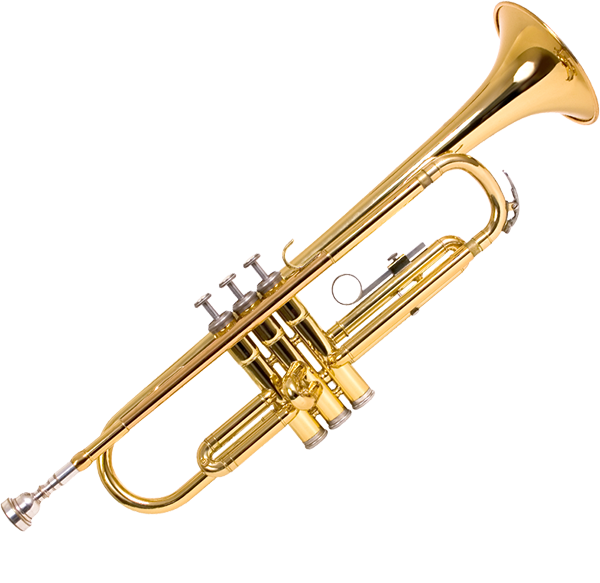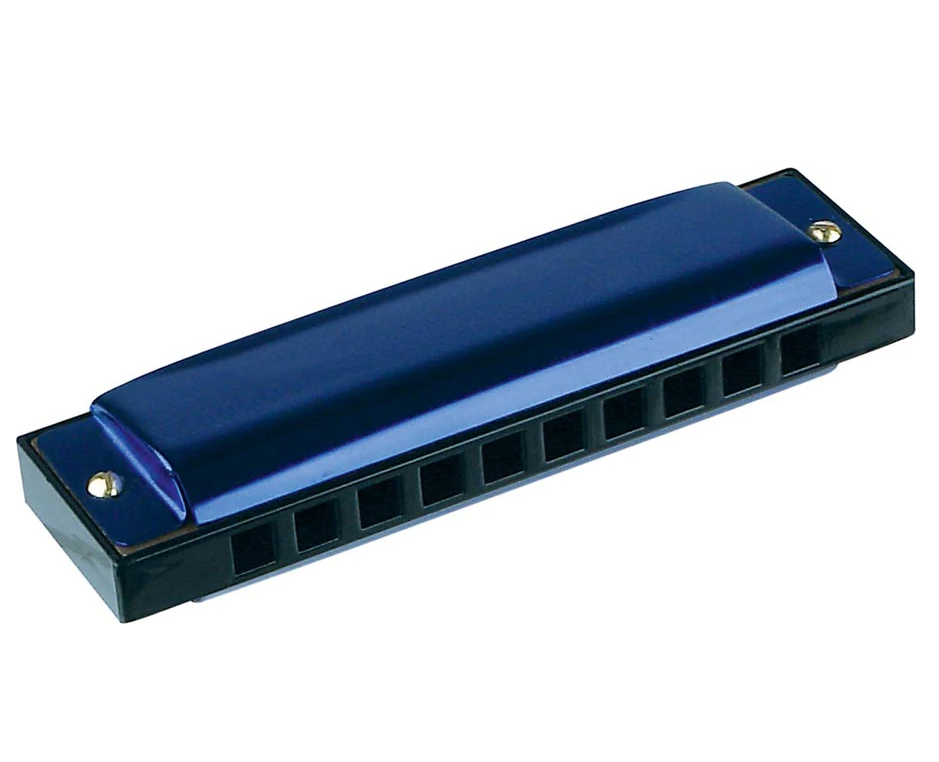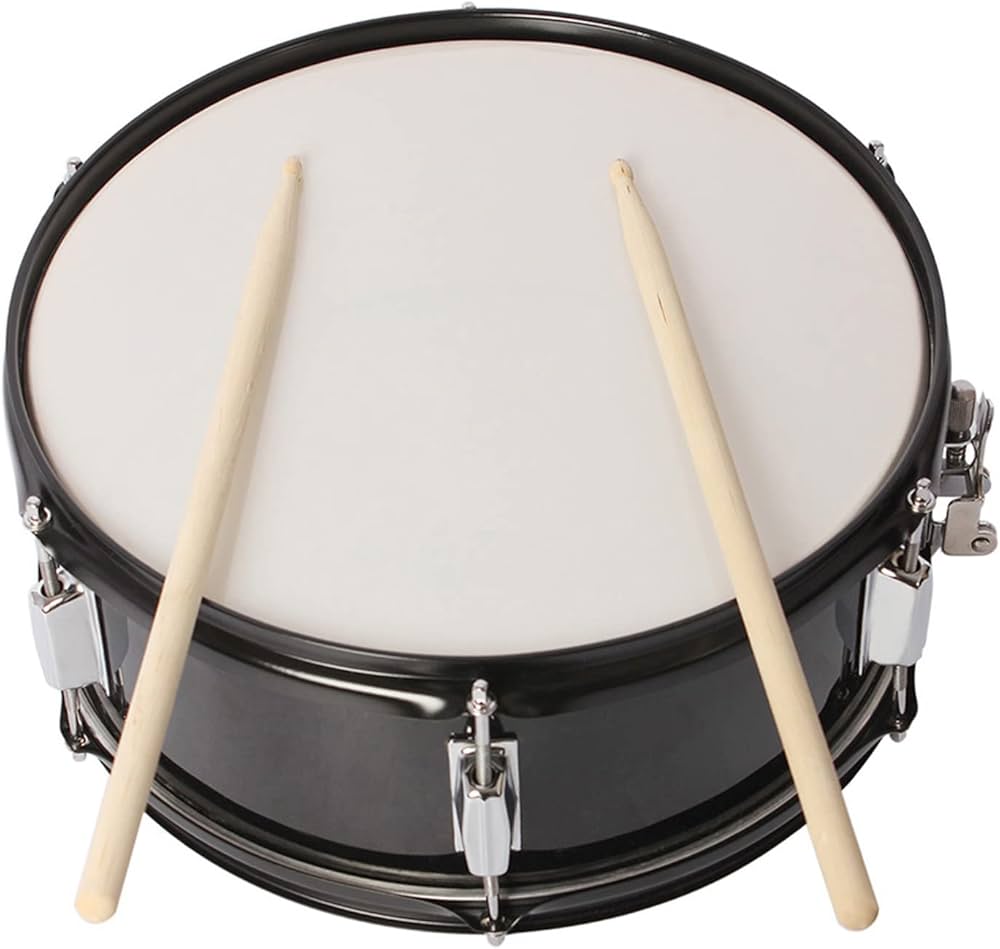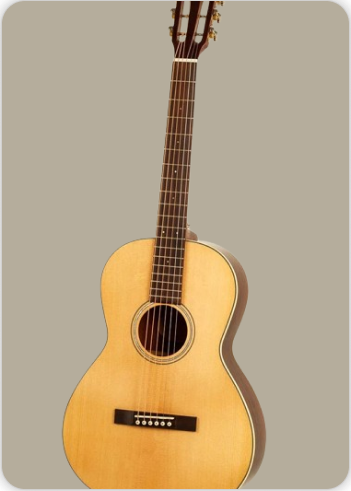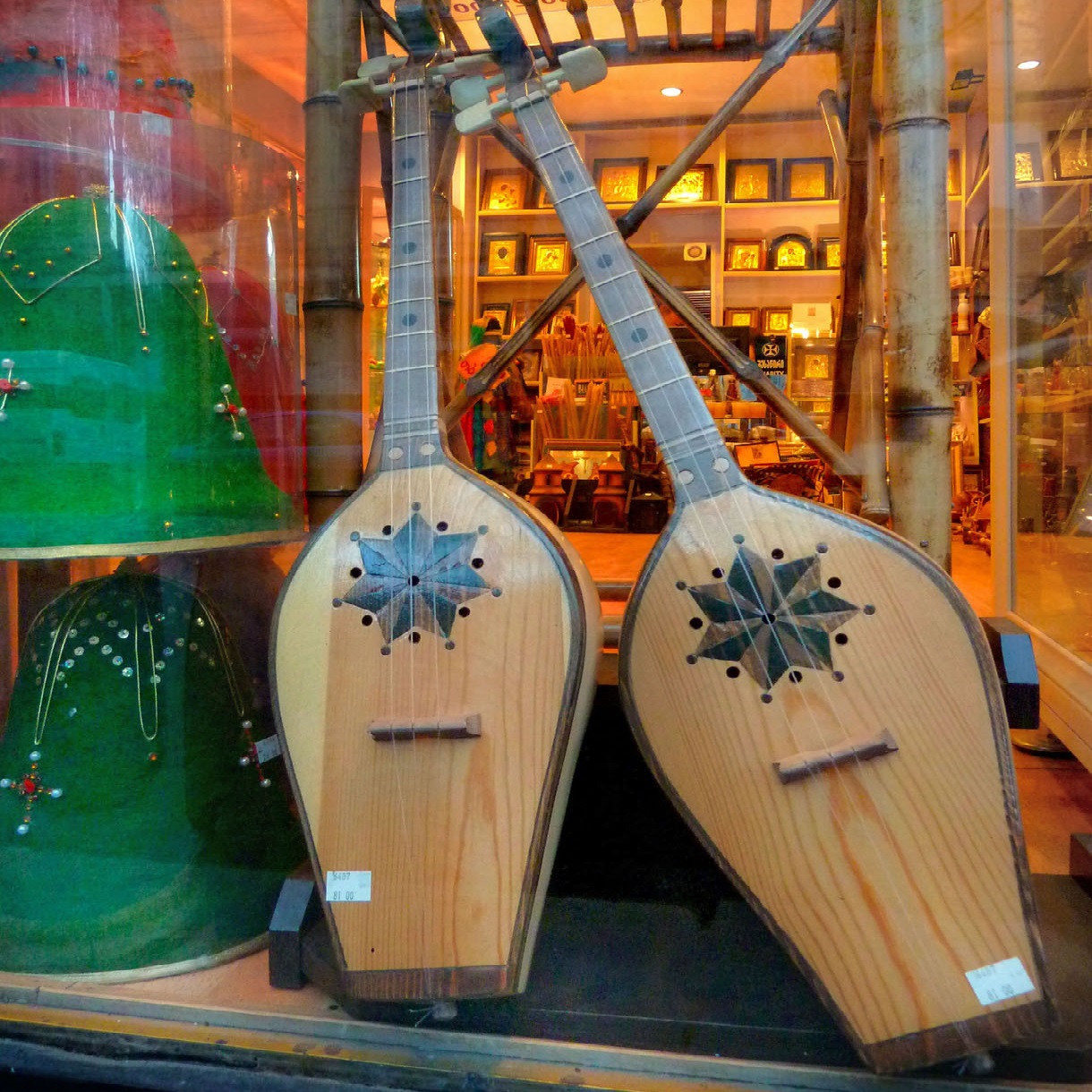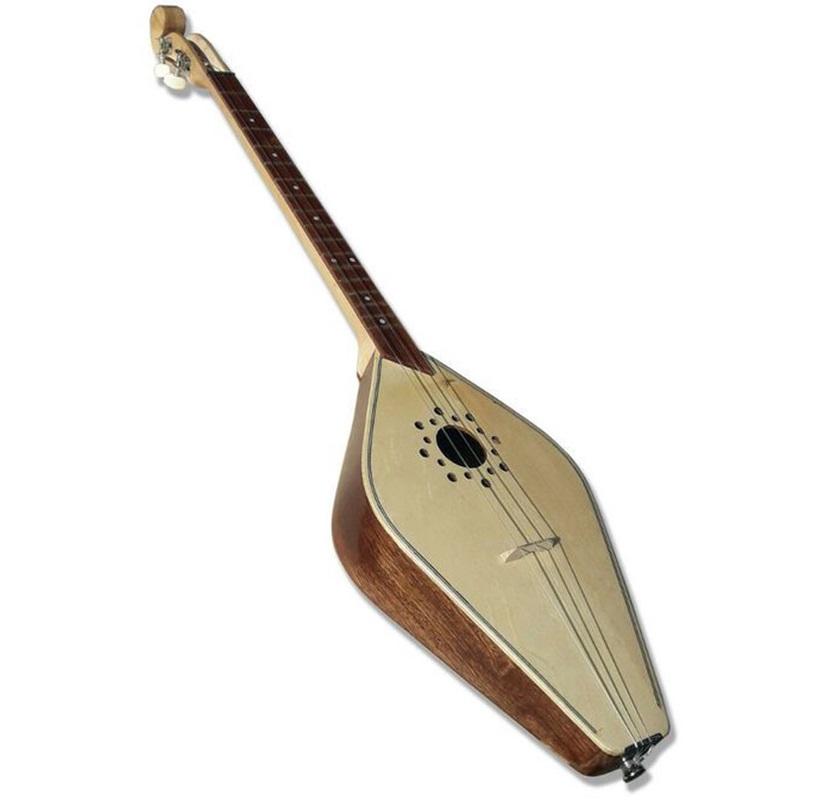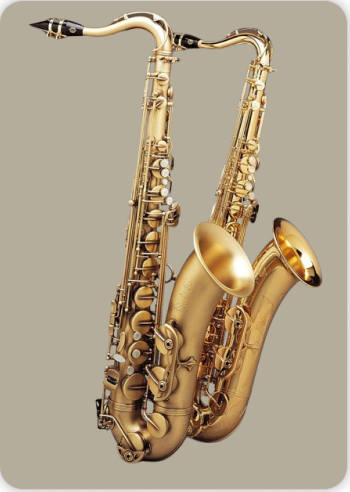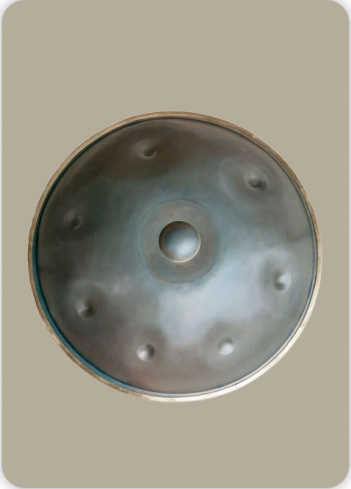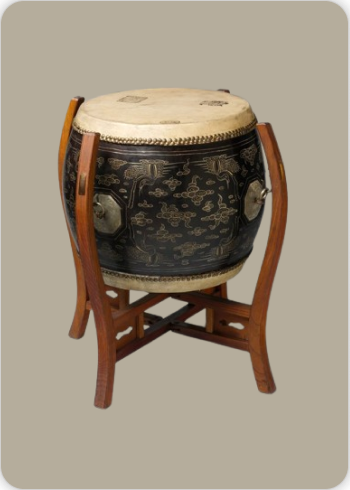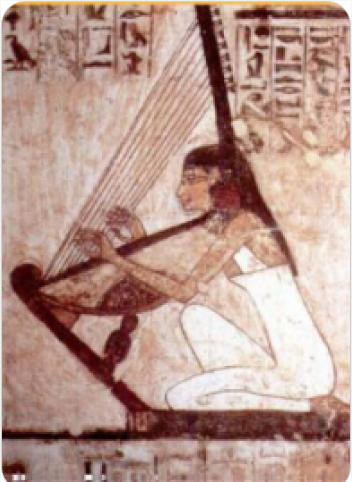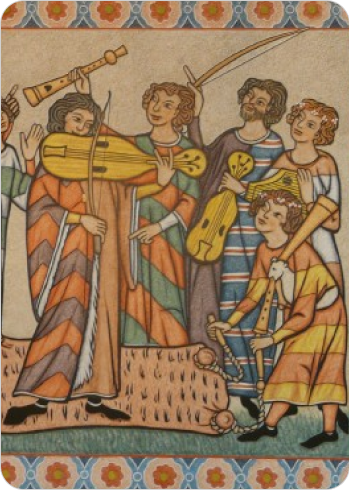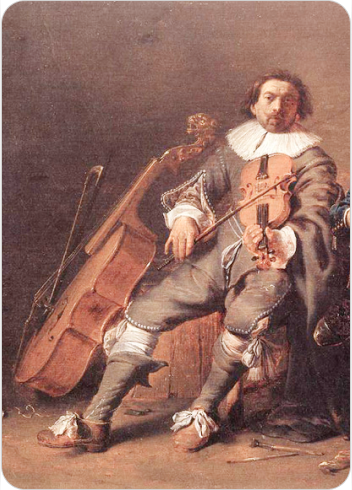Panduri
Plucked Instruments
Asia
Between 0 and 1000 AD
Video
The panduri is a traditional Georgian stringed musical instrument, predominantly found in the eastern regions of Georgia, including Pshav-Khevsureti, Tusheti, Kakheti, and Kartli. It is a plucked lute-like instrument with three strings of equal length and thickness, historically made from sheep or goat gut but now often replaced by nylon strings. The panduri serves primarily as an accompaniment instrument for solo heroic, comic, and love songs, as well as for dances.
Type of Instrument and Classification
The panduri is classified as a plucked string instrument, more specifically a chordophone of the lute family. According to the Sachs-Von Hornbostel system, it is a necked bowl lute, meaning the neck is attached to or carved from the resonator body, which is bowl-shaped with a wooden soundboard. It has three single strings that are strummed, and the pitch is altered by pressing the strings against the fretted fingerboard. The instrument’s string tension is controlled by friction pegs located on the headstock. The panduri’s method of sound production is strumming, which can be done with all fingers or just the thumbnail. It is a traditional folk instrument used mainly for accompaniment but also capable of solo performance, especially in its chromatic variants.
History of the Panduri
The panduri originates from Georgia, a country located at the crossroads of Eastern Europe and Western Asia, specifically in the region often referred to as the Caucasus. Georgia’s geographic position between the Black and Caspian Seas places it in Western Asia, and the panduri’s history is deeply intertwined with the cultural and musical traditions of this area. The earliest mentions of the panduri date back to the 5th century, and its name has been actively used in written sources since the 10th century. This long history indicates the panduri’s enduring presence in Georgian culture for over a millennium and a half. The instrument has been a symbol of positive emotions and social cohesion, used in everyday life, rituals, and celebrations. It was traditionally made from wood cut down during a full moon, reflecting ancient beliefs and practices connected to nature and craftsmanship. Over the centuries, the panduri evolved in design and usage, with notable developments in the 20th century, such as the introduction of chromatic frets by Kiril Vashakidze in 1934, which expanded its musical capabilities and allowed it to be used in more complex and classical musical contexts. The panduri’s history reflects the broader cultural history of Georgia, encompassing folk traditions, heroic poetry, and communal celebrations, making it a vital part of the country’s intangible cultural heritage.
Construction and Physical Structure of the Panduri
The panduri is traditionally constructed from a single piece of wood, often sourced from locally grown trees, with the entire instrument—including the body, neck, and head—carved from the same block. The wood is usually harvested during a full moon, a practice rooted in traditional beliefs to ensure the instrument’s quality and sound. The body of the panduri is bowl-shaped or spade-like, with regional variations in shape including oval, boat-shaped, or pear-shaped forms. The Khevsuretian panduri, for example, has a more massive, oar-shaped body with multiple sound holes, while others have fewer holes. The top soundboard is sometimes made from a different wood such as pine or spruce to enhance acoustic properties. The neck ends in a headstock that is often curved backward or shaped like a seashell, with four holes: three for tuning pegs and one for hanging the instrument.
The fingerboard traditionally has seven wooden frets per octave, though modern panduris may have chromatic metal frets to allow for a full range of half-steps. The bridge and nut are wooden, and the strings—historically made from gut—are now commonly nylon. The panduri’s dimensions typically measure around 30 inches in length, 7 inches in width, and about 3.7 inches in depth. The instrument’s construction allows for a diatonic scale with a range of one to two octaves depending on the variant. The panduri is strummed, and its design supports both rhythmic and melodic playing, making it suitable for accompanying various types of songs and dances. The craftsmanship of the panduri reflects a blend of functional design and artistic tradition, with each instrument often unique in its details and decoration.
Types and Variants of the Panduri
There are several types and variants of the panduri, reflecting regional differences and historical developments. The most common form is the three-stringed panduri found throughout eastern Georgia, including Pshav-Khevsureti, Tusheti, Kakheti, and Kartli. This traditional folk panduri typically has seven frets and a diatonic scale, used primarily for accompaniment in folk songs and dances. Another variant is the two-stringed panduri, which survives mainly in Khevsureti and has a simpler tuning and construction. In western Georgia, particularly in Imereti and Racha, a chromatic panduri variant exists, equipped with metal frets that allow for a full chromatic scale similar to that of a guitar. This chromatic panduri was developed in the 20th century to expand the instrument’s musical range and adaptability, enabling it to perform solo parts in classical and orchestral settings. The panduri is sometimes confused with the chonguri, another Georgian lute-like instrument from western Georgia, which is fretless and has a fourth half-length drone string. Unlike the panduri, the chonguri is mainly played by women and has a distinct musical role. Additionally, similar instruments exist outside Georgia, such as the phandar in Chechnya, which shares structural and functional characteristics with the panduri. These variants illustrate the panduri’s adaptability and its central role in Georgian and regional musical cultures.
Characteristics of the Panduri
The panduri is characterized by its three-string configuration, diatonic tuning, and fretted fingerboard, which together produce a distinctive sound that is both melodic and rhythmic. The strings are tuned in various ways depending on the region and type, with common tunings including G-A-C#, E-B-A#, and A-C#-E for the three-stringed panduri, and D-C# for the two-stringed variant. The instrument’s scale is traditionally diatonic, with seven frets per octave, although chromatic versions with twelve frets allow for a full range of half-steps. The panduri’s sound is warm and resonant, with a range typically spanning from a sixth to an octave and a ninth, depending on the variant. Its body shape and construction materials contribute to its tonal qualities, with the wooden bowl resonator amplifying the sound produced by strumming. The panduri is played by strumming with the fingers or thumbnail, producing a rhythmic accompaniment that supports vocal melodies. It is used to accompany solo songs, heroic and comic poems, love songs, and dances, reflecting its versatility. The instrument’s cultural significance is also a key characteristic, as it embodies the spirit and traditions of Georgian folk music. The panduri’s design, tuning, and playing style make it a unique and cherished instrument within Georgian musical heritage.
Playing Techniques and Sound Modifications
The panduri is a three-stringed plucked instrument traditionally played by strumming or plucking the strings with the fingers. Its narrow neck and low-tension strings allow for delicate and expressive playing. Players often use a combination of arpeggios and melodic lines to accompany vocal performances, especially heroic, comic, and love songs. The instrument’s frets, traditionally made of wood and arranged diatonically with seven frets per octave, enable a range of notes that support folk melodies. Modern panduris sometimes feature chromatic metal frets, expanding their musical possibilities. Sound modifications on the panduri are achieved through various tuning systems and playing styles. The classic three-string panduri tuning is often E-C#-A, but other tunings such as G-A-C# or A-C#-E are also common, depending on the regional style and musical context. Players can alter the tonal character by varying finger pressure, using different plucking techniques, or employing subtle bends and vibrato. The instrument’s wooden body, carved from a single block or constructed in a staved lute-like fashion, contributes to its warm, resonant tone. Additionally, the size and shape of the sound holes, which can be round or oval, influence the timbre and projection of the instrument.
In ensemble settings, the panduri is sometimes paired with other traditional Georgian instruments like the chonguri, which has a different tonal quality and playing style. The panduri’s role can shift from rhythmic accompaniment to melodic lead, especially when used in folk orchestras or solo performances. Advanced players utilize the full two-octave range provided by the twelve-fret versions of the instrument, allowing for more complex and classical repertoire to be performed on the panduri.
Famous Compositions and Historical Performances
The panduri has been central to Georgian folk music for centuries, accompanying a wide range of traditional songs and poems. While specific compositions are often passed down orally rather than formally written, many famous folk melodies and heroic ballads are inseparable from the sound of the panduri. It is traditionally used to accompany solo songs, dance music, and narrative poems, especially those celebrating Georgian heroes and legends. In the 20th century, the panduri gained prominence on concert stages and in folk ensembles, particularly after the innovations introduced by Kiril Vashakidze in 1934. Vashakidze developed versions of the panduri with twelve frets, named panduri prima and panduri tenor, which expanded the instrument’s range and allowed it to perform solo parts in classical compositions. This advancement helped integrate the panduri into national orchestras and formal concert settings, elevating its status from a purely folk instrument to one capable of sophisticated musical expression.
Folk ensembles featuring the panduri became popular in the mid-20th century, performing at festivals, cultural events, and state-sponsored concerts. The instrument’s presence in these performances helped preserve Georgian musical traditions and introduced the panduri to wider audiences both within and outside Georgia. The development of the contrabass panduri, a rare lower-pitched variant, further enriched folk ensemble textures and enabled performances in larger venues.
Most Influential Players
Throughout its history, the panduri has been played by countless skilled musicians, often within family and community settings, where the instrument was a cherished heirloom and symbol of cultural identity. While many players remain anonymous due to the oral tradition of Georgian folk music, some individuals have been recognized for their virtuosity and contributions to the instrument’s development. Kiril Vashakidze stands out as a key figure, not only for his role in redesigning the panduri with additional frets but also for his influence in promoting the instrument in professional music circles. His work enabled the panduri to transcend its folk roots and participate in more formal musical contexts. In the mountain regions of Eastern Georgia, particularly Khevsureti, renowned panduri players were highly respected and essential to community celebrations. Their skill in accompanying heroic poems and songs made them cultural icons. Contemporary Georgian folk musicians continue to honor these traditions, blending ancient techniques with modern interpretations.
Maintenance and Care
Maintaining a panduri involves careful attention to its wooden body, strings, and tuning mechanisms. Traditionally, the instrument is carved from a single piece of wood, often harvested during a full moon for symbolic reasons, and the soundboard may be made from spruce or pine. This natural construction requires protection from extreme humidity and temperature changes, which can warp the wood or affect the instrument’s tone. String tension on the panduri is relatively low, and the strings are typically made of nylon or gut, although the contrabass panduri uses wound strings similar to those on a double bass. Regular tuning is necessary due to the instrument’s sensitivity to weather conditions. Players often tune the panduri to standard folk tunings such as E-C#-A or G-A-C#. The frets, traditionally wooden, must be kept smooth and properly positioned to ensure accurate intonation. Modern panduris with metal frets require less frequent adjustment but still benefit from periodic inspection. The instrument should be stored in a protective case or hung on a wall away from direct sunlight and moisture. Cleaning the panduri with a soft cloth after playing preserves the wood’s finish and removes oils from the hands.
Interesting Facts and Cultural Significance
The panduri holds profound cultural significance in Georgian society, symbolizing happiness, merriment, and communal identity. Historically, it was considered an essential household item, often displayed prominently on the wall as a treasured possession. The instrument was rarely sold commercially; instead, it was crafted as a family heirloom or given as a heartfelt gift, sometimes equated in value to livestock or valuable goods like butter. In Eastern Georgia, the panduri was integral to rituals and ceremonies, including religious holidays, weddings, and mourning periods. During times of mourning, the panduri was put away and only brought out again in a ritual called “opening panduri,” marking the end of the mourning period with music and song. This tradition underscored the instrument’s role in the emotional and spiritual life of the community.
The panduri also features in traditional lullabies, such as the famous “Iavnana,” which is sung to protect children from illness through invocation of protective spirits. Shepherds in the mountainous regions frequently played the panduri while working, expressing their feelings of joy or sorrow through music. The instrument’s presence in everyday life and special occasions reflects its deep roots in Georgian culture. The development of different types of panduri, including the two-stringed Khevsuretian variant and the contrabass panduri, illustrates the instrument’s adaptability and enduring relevance. Its use by both men and women, in solo and ensemble contexts, highlights its versatility and importance as a symbol of Georgian musical heritage.
FAQ
What is the historical origin of the Panduri musical instrument?
The Panduri is a traditional Georgian string instrument that dates back several centuries. It originated in the mountainous regions of Georgia and is deeply tied to the country’s folk music. Historically, it has been used to accompany vocal performances. The instrument reflects the cultural identity of eastern Georgian communities.
What materials are used in the construction of the Panduri?
Panduris are typically crafted from a single piece of wood such as walnut, maple, or chestnut. The strings are traditionally made from gut, though modern versions may use nylon or steel. The soundboard is often thin and flat to enhance resonance. The instrument is finished with natural varnishes or oils for preservation.
What are the main features and musical uses of the Panduri?
The Panduri has three strings and is usually tuned in fourths or fifths. It produces a bright, rhythmic tone suitable for dance and storytelling. Musicians use it to accompany traditional Georgian polyphonic singing. It is also played solo and in folk ensembles across the country.
 Links
Links
References
Other Instrument
Categories

